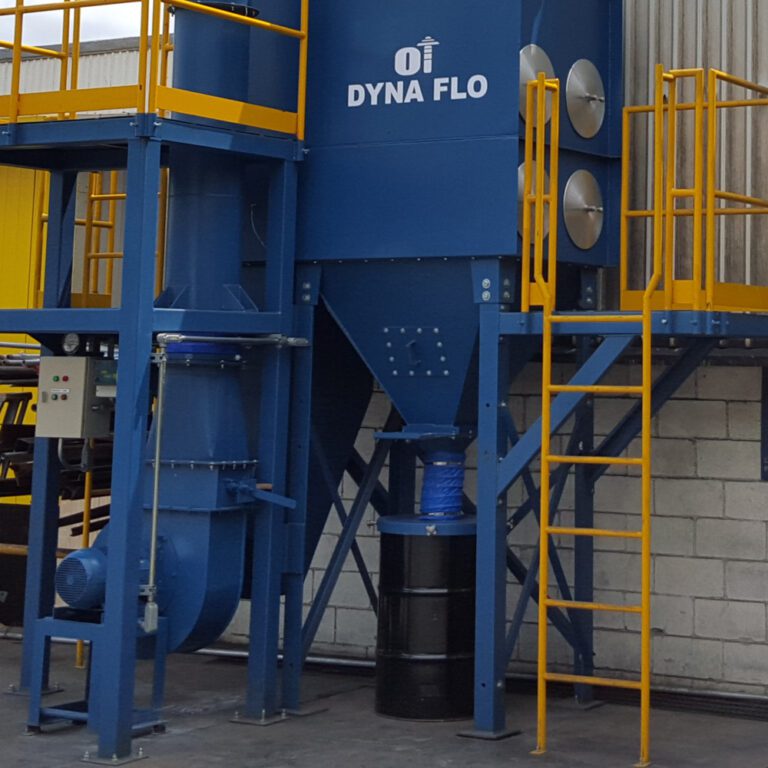sistemas de descarga colector de polvos, colector de polvo, capacidad de descarga, válvula

sistemas de descarga colector de polvos, colector de polvo, capacidad de descarga, válvula
Discharge Systems
In dust control systems, one of the essential parts that are not important to investors are the discharge systems. This is often due to the fact that the important function it has is unknown, in addition to being the lower part and the least striking it is less relevant.
The implementation of a Dust Collector in a company is only the first step to control the particles and avoid their accumulation. For a dust collection or control system to function properly, it is necessary that the captured dust be dislodged or properly disposed of outside the collector and the business.
In order to dispose of the powders captured during the filtering process, it is necessary to have a good pneumatic seal after the hopper, which is a part of the collector, serves as a transition and allows to dispose of the residues that are collected by the suction hoods. .
What if you don't have a good pneumatic seal?
In the absence of a suitable seal, two things can happen:
- External air may enter from the bottom of the collector, causing a decrease in dust and suction control at the capture points
- If air leaks through the bottom of the collector, this will cause the dust to rise or return inside the collector and cannot be discharged, this will cause a higher differential pressure and will shorten the life of the filters.
The hoppers are only the first part of the discharge system in a collector, their function is not to store, but to serve as a transition part, the dust or residue passes through it and falls into a rotary valve to dose its disposal in bags. or tambos.
The wrong provider
In the vast majority of cases, dust collectors are viewed as an unnecessary purchase and are therefore taken lightly by stakeholders. Selecting the supplier without knowing its reputation, projects carried out, capacity, etc., causes that at the time of assigning and carrying out the projects they do not provide the solution that is required and therefore generate the perception that buying a collector is a wrong investment .
Before assigning a project as important as a Dust Collector System, consult and compare.
Rotary valves
This is a very important element in the dust collector, its function is to dose and complete the pneumatic seal for the correct operation of the system.
There are different types of arrangements and finishes for rotary valves, these are normally made of carbon steel, but they can also be made of stainless steel, for food grade and / or corrosion, this totally depends on the application in which it will be used.
DYNA FLO® rotary valves are high quality manufactured parts. Designed with high resistance and efficiency, we have a great variety and capacity.
Noise emission
Noise is another factor to consider when investing in a Dust Collector, the management of the noise decibels inside or outside the plant should be considered at the time of manufacture, the noise is normally caused by the fan the which, due to its function, tends to generate it, but it is the supplier's responsibility to verify that this equipment does not exceed the permitted levels, and the noise it generates can be attenuated with the installation of acoustic booths or silencers.
How to define the capacity of a rotary valve?
The first thing we must know to be able to correctly determine the type of valve that we require, is the application in which you want to implement, to know the type of material that will pass through it. The second thing we must know is the amount of material that it will handle, the volume that it will be passing per minute. You must know these data perfectly since with them you will determine the capacity, size and manufacturing material.
Calculate the capacity of the rotary valve can be obtained as follows:
CCP= CVxDMxRPM
Where
CCP: Capacity Calculation
CV: Volumetric Capacity
DM: Material Density
RPM: Revolutions per Minute
To obtain a correct calculation on the type of valve you require for your discharge system, you must approach us and we will gladly support you.
DYNA FLO® Tips:
- Before investing in an Industrial Dust Collector, consult with us, call us and we will gladly assist you.
Collector Types
sistemas de descarga colector de polvos, colector de polvo, capacidad de descarga, válvula
sistemas de descarga colector de polvos, colector de polvo, capacidad de descarga, válvula
Other articles of interest

5 key points to invest in a collector
During 2022, the industrial sector around the world is facing the challenge of continuing to protect the health of employees, improve the conditions of the work area, avoid emitting pollutants into the atmosphere at all costs and make the most of the company's budget. Without a doubt, these are some of the challenges that require the use of equipment and technology, in addition to an effective analysis that allows them to be faced and solved.

Airborne particles What are they?
Pollutants in the atmosphere are more common than we all think, they directly impact the environment and health. Suspended particles as it is commonly known...

Rule 484 – Combustible Metals
Good practices in the management of Combustible Metals within companies are based on the NFPA (National Fire Protection Association) standard 484, this standard establishes the appropriate parameters for the prevention and management of these residues, such as: potassium , magnesium, zirconium, titanium, sodium and lithium.





